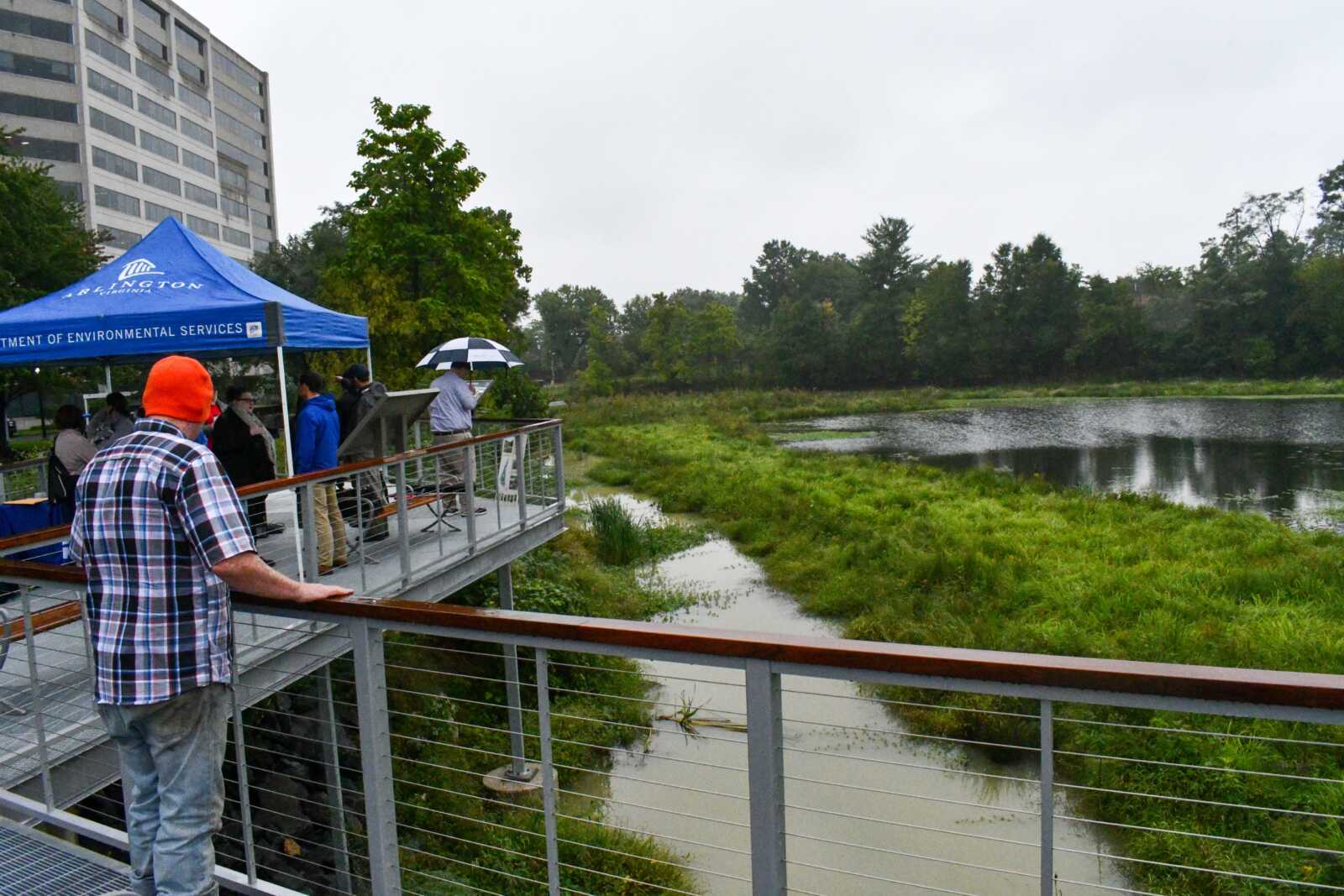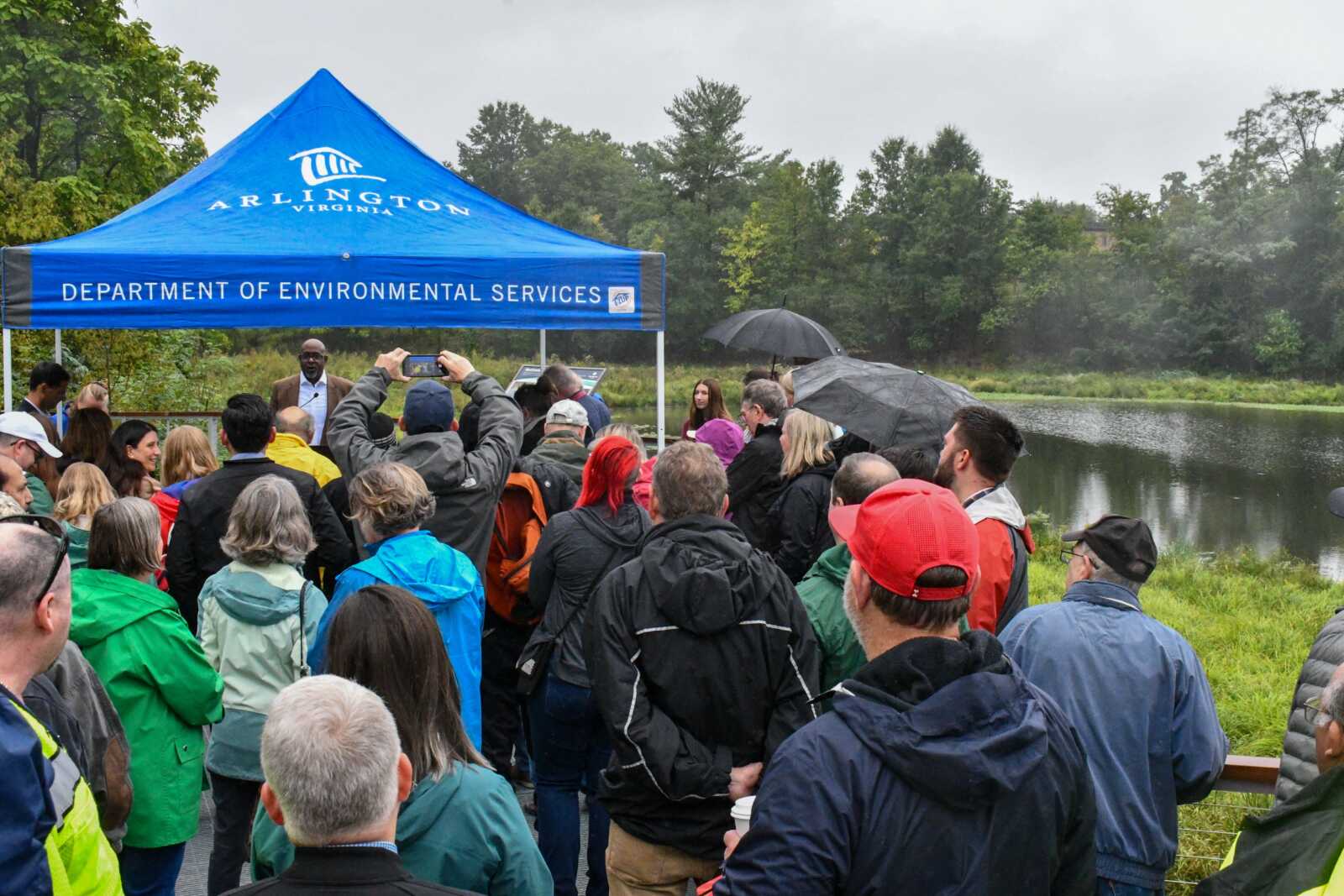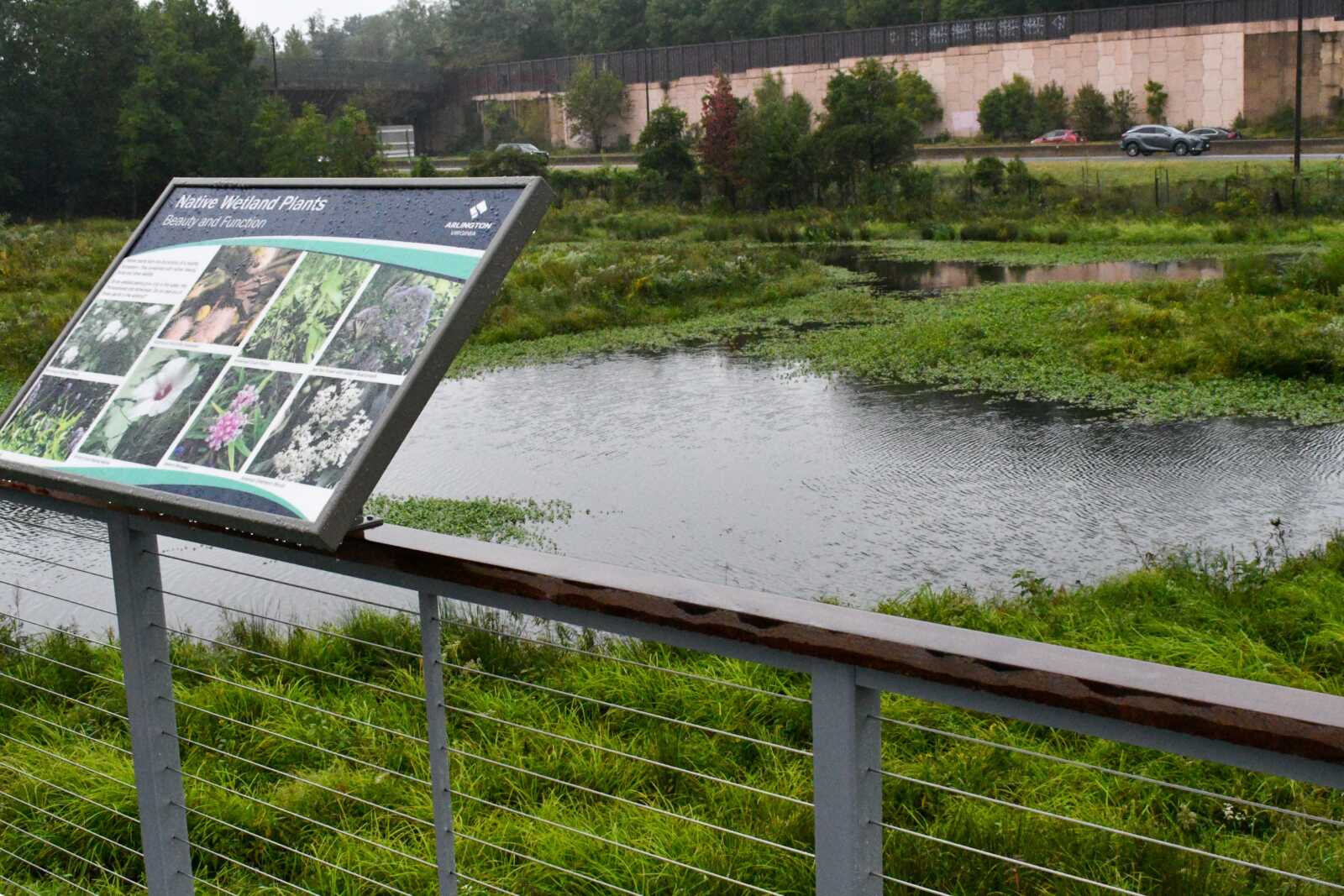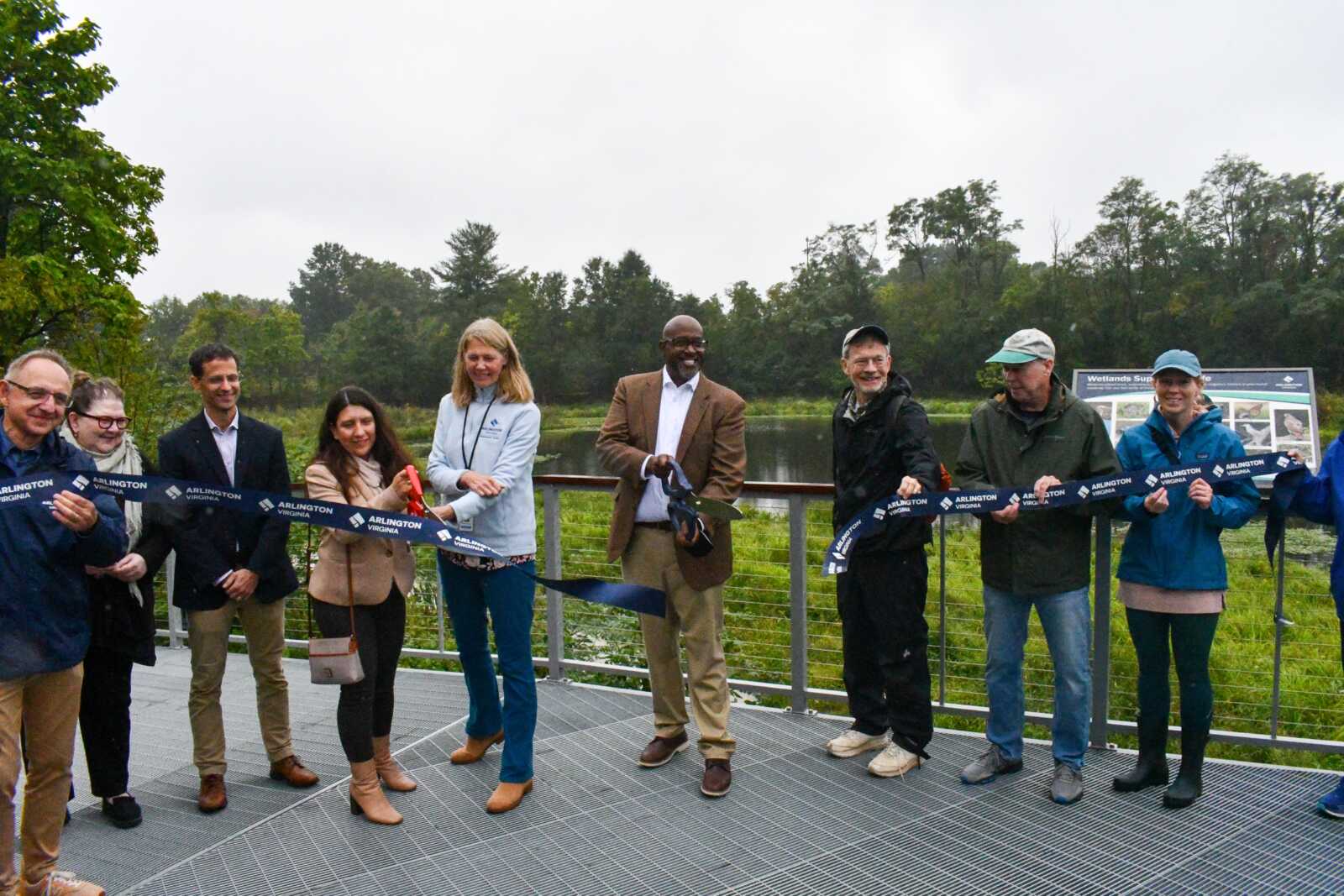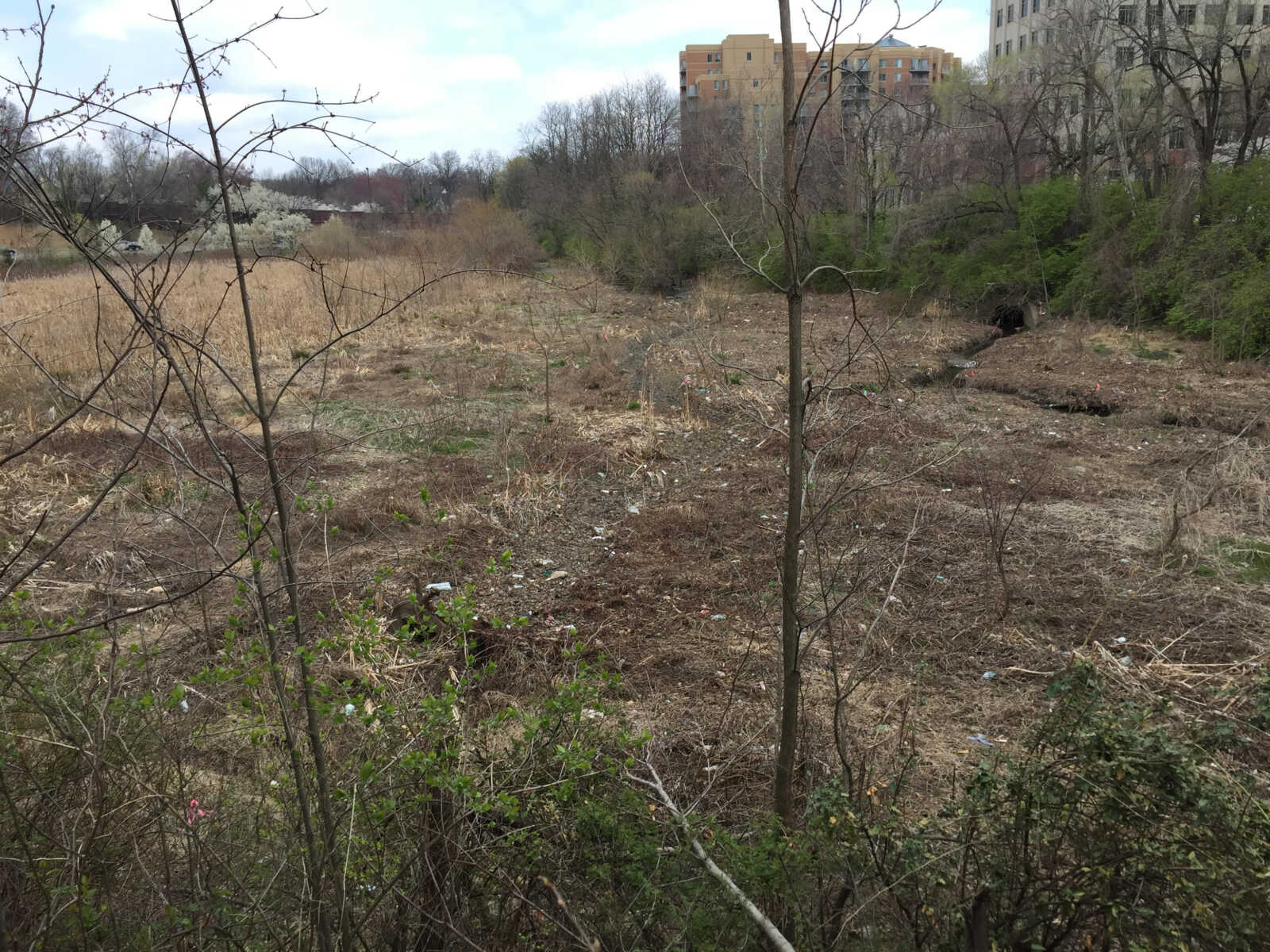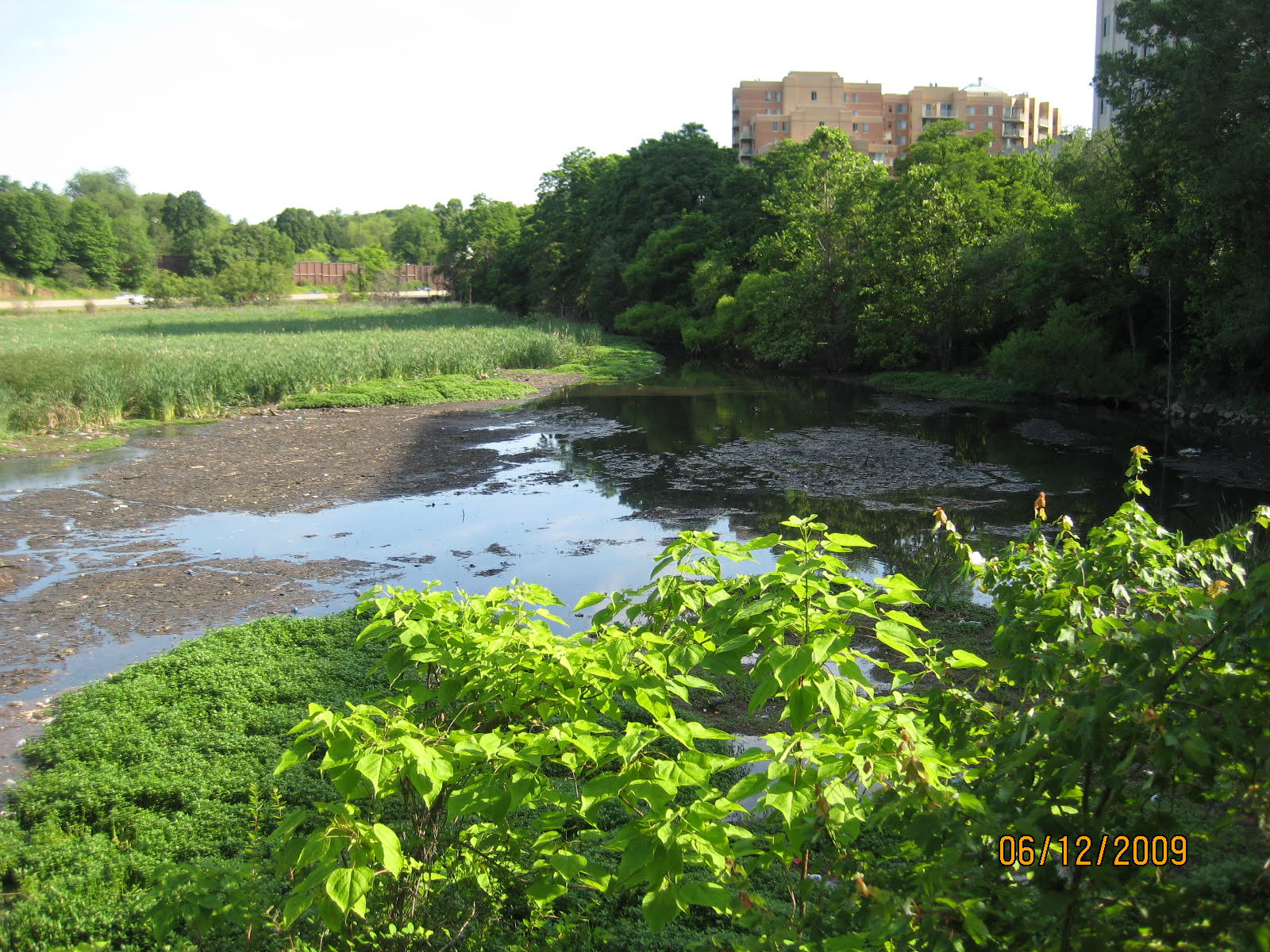The restoration of Ballston Wetlands Park is officially complete and the park is now open to the public.
Arlington County officials and community members marked the occasion today (Tuesday) with a ribbon-cutting.
The rain-soaked event marked the end of a $4 million renovation project that transformed what was formerly known as Ballston Beaver Pond — until the departure of the beavers — from a sludge-filled area into a natural stormwater filtration system and wildlife refuge.
“Over the years, sediment, trash, and invasive plants essentially filled the pond,” County Board Chair Christian Dorsey told a crowd of attendees. “Now, cleared of that sediment and other debris, this retrofitted wetland system not only improves stormwater flow and filtration but also captures trash, serving as both a wildlife refuge and a natural respite within our urban village of Ballston.”
Initially built in 1980 as a stormwater detention facility for runoff from I-66, the pond gradually evolved into a haven for local wildlife. By the 1990s, species such as beavers, muskrats, geese, herons, egrets, red-winged blackbirds, fish and turtles had migrated to the area.
Dam-building activities by the beavers, however, interfered with the site’s original drainage systems. When the beavers eventually left, the county took the opportunity to make necessary improvements.
Planning for the renovations dates back to 2011 but it took a decade for the work to kick off in December 2021. Acquiring the necessary easements took about eight years and Covid further delayed the project.
The site now features new informative signage, educational exhibits and thousands of native trees and plants. Logs for turtles to sun themselves, dubbed “basking stations,” have also been added.
There is also a hidden feature to manage beaver activity going forward. The county installed a secondary, concealed pathway for water to flow out and bypass their dams, a solution known as a “beaver baffle.”
That may be prescient, given some reported beaver sightings, Lily Whitesell, a stormwater outreach specialist with Arlington’s Dept. of Environmental Services (DES), told ARLnow. Perhaps the beavers moved back to enjoy the upgrades to their old habitat.
Jason Papacosma, a DES wetlands project manager, said the project extends beyond local restoration efforts and contributes to the broader clean-up of Chesapeake Bay.
“This is a project that gives us credit for our obligations to clean up the Chesapeake Bay. And in terms of all the progress we’ve made to date, this project gives us at least 10% of that overall progress,” Papacosma said.
Demetra McBride, bureau chief of the county’s Office of Sustainability and Environmental Management, acknowledged that while the site was not originally an “environmental asset,” it has now become one.
“I realize that this is not a natural asset… But the community, going back as far as 10 years, wanted more. The leadership of Arlington inspired more. And your public servants and their contractors delivered more,” she said during the ceremony.


